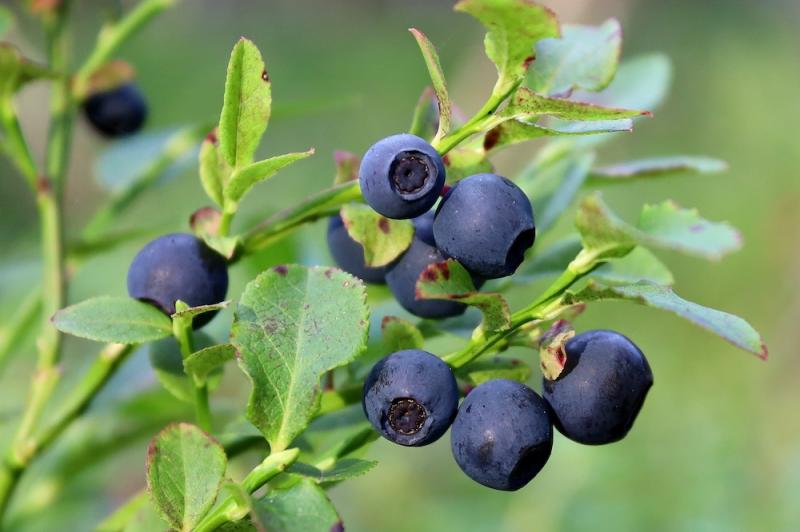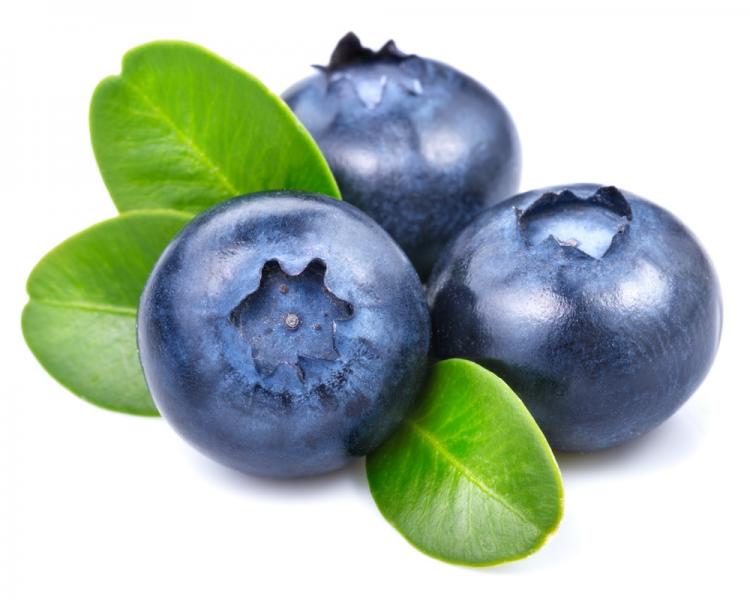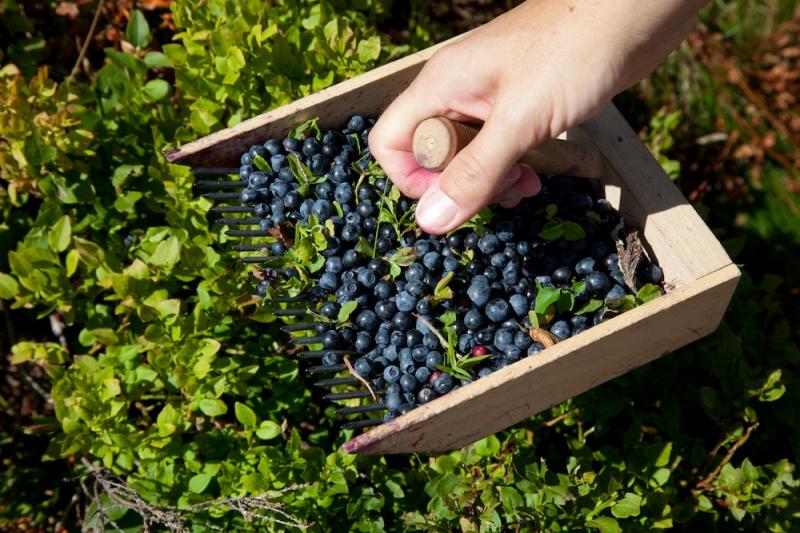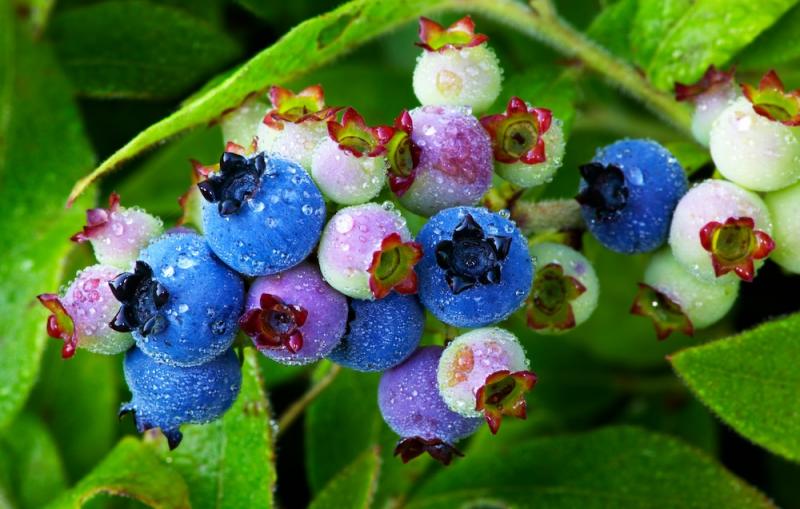
I'm often puzzled when people choose to take herbs in capsules or extracts when they are best taken as food. If you can purchase and consume the herb in food form, why spend money buying capsules and tinctures?
My favorite example of this is bilberry. Bilberries are simply a species of blueberry. Specifically, bilberries are Vaccinium myrtillus and blueberries are V. corymbosum, V. angustifolium, and a few other species. The first picture below shows bilberries, the rest are blueberries, so you can see the similarly for yourself. Closely related to the Vaccinium species are huckleberries, which belong to the genus, Gaylussacia. But, the bottom line is that pretty much all of these berries have similar medicinal value and can easily be eaten as foods.
 What makes all these berries medicinal is the pigments they contain, especially ones found in the darker-colored berries. One group of these pigments is anthocyanins, which have antioxidant and anti-inflammatory properties. Many blue, purple, and violet foods contain these flavonoids.
What makes all these berries medicinal is the pigments they contain, especially ones found in the darker-colored berries. One group of these pigments is anthocyanins, which have antioxidant and anti-inflammatory properties. Many blue, purple, and violet foods contain these flavonoids.
Bilberry is preferred as a medicine because it has a much higher content of anthocyanins and other valuable nutrients, partly because bilberries are harvested wild. Wild blueberries would likely be closer to bilberries in terms of their health benefits than the cultivated berries commonly available at the grocery store, but this is generally true of all foods. Wild foods typically contain more phytochemicals, giving them stronger medicinal effects. Still, keep in mind that consuming blueberries or huckleberries will have many of the same benefits as bilberries, you just need higher quantities.
Eye Health
 One of their best-known uses for bilberry is to promote eye health. They have long been used as a folk remedy for preventing and treating eye diseases, and modern research backs this up. The eyes are highly subject to oxidative stress because of their exposure to light. By providing antioxidants bilberry protects the eye tissue and can be helpful with conditions like retinopathy and macular degeneration. They may also help prevent cataract formation, protect against eyestrain caused by working on computers and other electronic devices, reduce glaucoma, and improve night vision.
One of their best-known uses for bilberry is to promote eye health. They have long been used as a folk remedy for preventing and treating eye diseases, and modern research backs this up. The eyes are highly subject to oxidative stress because of their exposure to light. By providing antioxidants bilberry protects the eye tissue and can be helpful with conditions like retinopathy and macular degeneration. They may also help prevent cataract formation, protect against eyestrain caused by working on computers and other electronic devices, reduce glaucoma, and improve night vision.
There have been stories about World War II pilots in England eating bilberry jam to improve their night vision. And, while this may be more of a legend than reality, there is evidence that bilberries and other antioxidant-rich foods can help support vision and eye health.
Circulation and Blood Sugar
 Bilberries can also help to tone up blood vessels. Similar to the way inflammation and oxidative damage cause eye diseases, oxidized cholesterol and inflammation lead to plaque buildup in arteries contributing to problems like high blood pressure, thrombosis, heart attacks, and strokes. Bilberry and other antioxidant foods help prevent this.
Bilberries can also help to tone up blood vessels. Similar to the way inflammation and oxidative damage cause eye diseases, oxidized cholesterol and inflammation lead to plaque buildup in arteries contributing to problems like high blood pressure, thrombosis, heart attacks, and strokes. Bilberry and other antioxidant foods help prevent this.
Bilberries also tone up the venous circulation and can be helpful for people who suffer from peripheral artery disease, varicose veins, and hemorrhoids. They may also tone up capillaries, thereby helping with problems like easy bruising and spider veins.
The leaves of bilberries, blueberries, and huckleberries have been used as folk remedies for blood sugar problems. Traditionally, the leaves have been gathered and dried and used for tea. They have also made their way into a number of commercial herbal preparations for reducing high blood sugar.
Using Bilberry and Blueberries
 If you can get a hold of fresh bilberries or high-quality blueberries (organic or wildcrafted), that’s a great way to use this herb. Frozen berries are also a convenient alternative. Either way, consume about ½ cup of bilberries or blueberries daily to improve eye health or aid circulation. You can also get dried berry powder. The dose for the dried powder is about 2,000 to 5,000 mg a day. If you have 500 mg capsules, this would be 4 to 10 capsules daily divided into two or three doses. Many products use standardized extracts, which concentrate the anthocyanins allowing for a lower dose.
If you can get a hold of fresh bilberries or high-quality blueberries (organic or wildcrafted), that’s a great way to use this herb. Frozen berries are also a convenient alternative. Either way, consume about ½ cup of bilberries or blueberries daily to improve eye health or aid circulation. You can also get dried berry powder. The dose for the dried powder is about 2,000 to 5,000 mg a day. If you have 500 mg capsules, this would be 4 to 10 capsules daily divided into two or three doses. Many products use standardized extracts, which concentrate the anthocyanins allowing for a lower dose.
David Winston makes a Blueberry Solid Extract which is a paste made from blueberries and blueberry juice. The dose he recommends is ¼ teaspoon twice daily, but you could certainly take more. You could also make your own jam with them and use them that way.
You could also make a blueberry or huckleberry syrup. I’d use only wildcrafted or organically grown fruits. Extract the juice and cook it down until it thickens. Then measure how much of the juice you have and add an equal amount of honey or glycerin. You can refrigerate this or can it to preserve it and use a couple of spoonfuls daily.
If you want the blood-sugar regulating effects of bilberries or blueberries, you can harvest the leaves, dry them, and use them make make tea, which is how they have traditionally been used. It would also be possible to make a tincture or glycerite from them, but I’m not sure what the proper dosage would be.
There are no problems with using the fruit regularly and in large quantities. If you use the leaves, you should make sure to use an appropriate species. According to my favorite ethnobotanical reference (Native American Ethnobotany by Daniel E. Moerman), V. angustifolium, V. myrtilloides, V. ovalifolium, and V. ovatum are the species that Native Americans historically used. The leaves do have a long history of safe use, but if you do experience any gastric irritation using the leaves discontinue using them.
Steven's Articles
October
-

-
Understanding Caffeine & Cellular Adaptation
Preserving the power of caffeine's buzz and the…
September
-

-
Horseradish
A pungent spice for aiding protein metabolism…
-

-
Banaba or Crepe Myrtle
A beautiful tree from Southeast Asia whose leaves…
August
-

-
Monkeyflowers
Flower essences to help see ourselves more clearly…
-

-
Mariposa Lilies
Strengthening the bond between mother and child…
-

-
The Noble Bay Leaf
A common kitchen herb for aiding digestion and…
-

-
Epimedium: Horny Goat Weed
A circulatory stimulant and kidney yang tonic…
July
-

-
The Medicinal and Nutritional Benefits of Apricots
A nutritious fruit and valuable medicinal seed for coughs
-

-
Dogwoods
Asian dogwood is used to stop excessive discharge,…
June
-

-
Neem: The Village Pharmacy
A popular Ayurvedic remedy for dental and immune…
-

-
Spilanthes: The Toothache Plant
A traditional remedy for teeth and gums, as well…
-

-
Forsythia
An anti-inflammatory, fever-reducing, and infection fighting herb
May
-

-
Buckwheat (Kashi)
A delicious, high protein, gluten-free, gut-healthy food
-

-
Leaky Gut Syndrome
Plugging the leaks on the underlying cause of…
-

-
Storksbill
An edible, medicinal, weedy herb, helpful for…

